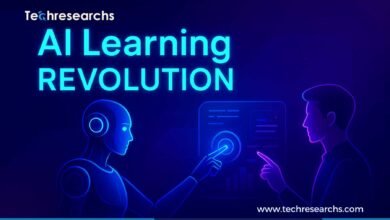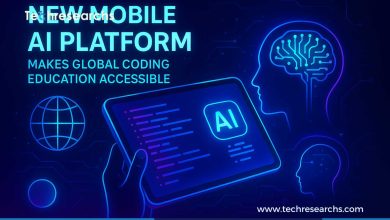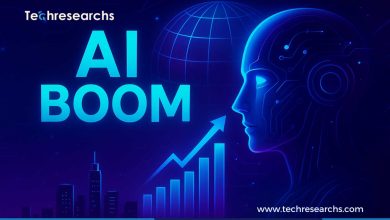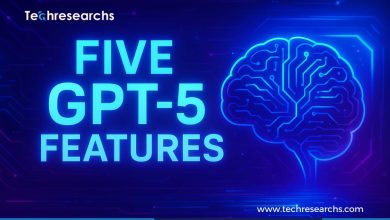How Computer Vision in AI is Enhancing Automation and Security
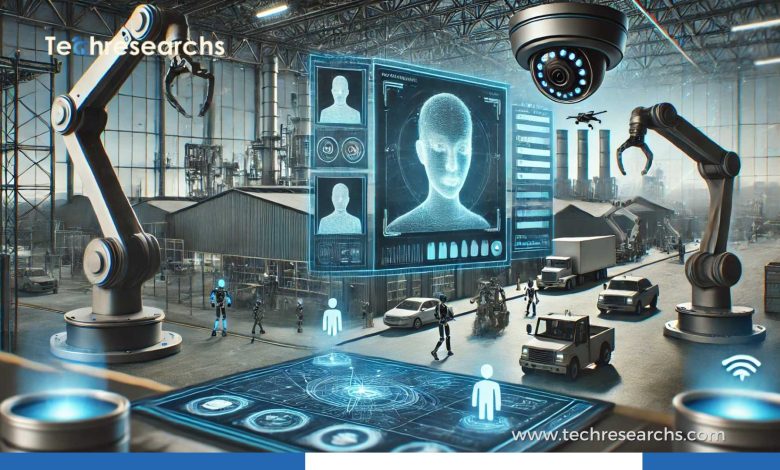
Computer Vision in AI is transforming industries by enabling machines to interpret visual data with human-like intelligence. From automating processes in manufacturing to enhancing security through facial recognition, this technology is reshaping how businesses operate. As AI continues to evolve, computer vision is proving to be a critical component in modern automation and security systems.
What is Computer Vision in AI?
Computer vision is a subset of artificial intelligence (AI) that allows machines to analyze and process visual data. It leverages deep learning, neural networks, and image processing to recognize patterns, detect objects, and make decisions based on visual input. This ability is driving innovation in multiple sectors, including healthcare, surveillance, retail, and robotics.
How Computer Vision Enhances Automation
1. Industrial Automation
In manufacturing, computer vision in AI is optimizing production lines by detecting defects, monitoring assembly processes, and ensuring product quality. Automated quality control systems use vision-based inspection to identify anomalies, reducing human errors and operational costs.
2. Autonomous Vehicles
Self-driving cars rely on computer vision to navigate roads safely. AI-powered cameras detect pedestrians, traffic signals, and road signs, allowing autonomous vehicles to make real-time decisions. This technology enhances road safety and improves traffic management.
3. Retail and Inventory Management
Retailers use AI-powered computer vision for inventory tracking, theft detection, and customer behavior analysis. Automated checkouts eliminate the need for cashiers, streamlining the shopping experience while reducing operational costs.
4. Healthcare Diagnostics
Medical imaging is revolutionized by computer vision. AI algorithms analyze X-rays, MRIs, and CT scans to detect diseases such as cancer at an early stage. This enhances diagnostic accuracy and speeds up treatment planning.
How Computer Vision Improves Security
1. Facial Recognition Technology
One of the most significant security applications of computer vision in AI is facial recognition. Governments, airports, and businesses use it for identity verification, fraud prevention, and law enforcement. It enhances surveillance by identifying individuals in real-time.
2. Intrusion Detection Systems
Security cameras equipped with computer vision detect suspicious activities, unauthorized access, and potential threats. AI-powered surveillance systems can send instant alerts, helping security personnel respond swiftly.
3. Fraud Detection in Banking
Banks leverage computer vision for biometric authentication and fraud detection. AI-driven systems analyze customer behavior patterns to flag suspicious transactions, enhancing financial security.
4. Smart City Surveillance
AI-powered computer vision plays a crucial role in smart cities by monitoring traffic, detecting accidents, and ensuring public safety. These systems help law enforcement agencies manage large-scale surveillance efficiently.
Challenges in Implementing Computer Vision in AI
Despite its advancements, computer vision in AI faces several challenges:
- Data Privacy Concerns: Facial recognition and surveillance raise concerns about personal privacy and data security.
- High Computational Costs: Training deep learning models requires powerful hardware and extensive data.
- Accuracy and Bias Issues: AI models may produce biased results if trained on non-representative datasets.
Future of Computer Vision in AI
The future of computer vision in AI looks promising with advancements in 5G, edge computing, and quantum computing. Enhanced AI models will improve accuracy, reduce bias, and expand applications across industries, making automation and security systems even more reliable.
Comparison Table: Computer Vision Applications in Different Sectors
| Sector | Application | Benefit |
|---|---|---|
| Healthcare | Medical Image Analysis | Early disease detection |
| Security | Facial Recognition | Enhanced surveillance |
| Retail | Inventory Tracking | Reduced losses, better management |
| Automotive | Self-Driving Cars | Improved road safety |
| Finance | Fraud Detection | Secure banking transactions |
FAQs of Computer Vision in AI
1. What is computer vision in AI?
Computer vision in AI is a technology that enables machines to interpret and analyze visual data, mimicking human vision capabilities.
2. How does computer vision improve automation?
It automates processes like quality control, inventory tracking, and autonomous driving, reducing human intervention and errors.
3. How is computer vision used in security?
It enhances security through facial recognition, intrusion detection, fraud prevention, and smart city surveillance.
4. What are the challenges of implementing computer vision in AI?
Key challenges include data privacy concerns, high computational costs, and potential bias in AI models.
5. What is the future of computer vision in AI?
Future advancements in AI, 5G, and quantum computing will enhance accuracy, efficiency, and real-world applications.
More TechResearch’s Insights and News
Alexa AI: The Evolution and Future of Smart Voice Assistants
